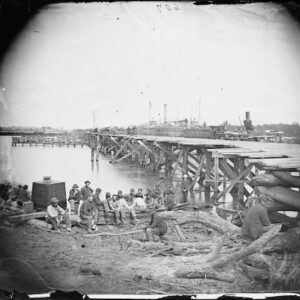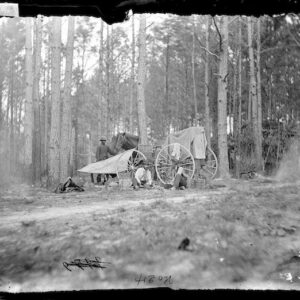Tag: Roche (Thomas C.)
 Wikipedia says: Thomas C. Roche (1826–1895) was a photographer known for his photographs of the American Civil War.
Wikipedia says: Thomas C. Roche (1826–1895) was a photographer known for his photographs of the American Civil War.
Roche’s first job as a professional photographer was for Henry T. Anthony, a chemist in New York, and his brother Edward, for whom he took photographs of the city and the harbor starting in 1859. He continued to work for the Anthonys during the war, making photographs for his company’s popular “Instantaneous Views.” He also traveled on the front lines with the Army of the James. An anecdote describes Roche’s reaction to the horrors of war: after an artillery shell exploded next to him, it was said, “shaking the dust from his head and his camera he quickly moved to the spot and, placing it over the pit made by the explosion, exposed his plate as coolly as if there were no danger.”
After the war Roche returned to work for the Anthonys, with whom he published a book on photography.
Wikipedia also says: Thomas C. Roche (1826–1895) In 1858, Roche became interested in photography and was listed as an agent at 83 South St. in Brooklyn, New York. In 1862 he went to work for Anthony Co., taking the first complete set of Central Park stereoviews published by them. Many, early Anthony stereoviews by Roche were published on fragile glass which, not surprisingly, are today extremely rare. Over the years, Roche was Anthony Co.’s principal photographer and senior advisor and one of their most valuable assets, developing many patents for the company’s products and processes. Arguably, Roche’s most important patent (241,070) was taken out in 1881 for a silver bromide-sensitized gelatin, “dry plate.” Roche’s process would signal the end of “wet plate” photography. Roche lived well off his many royalties, and continued as technical advisor to the company, sharing his knowledge, wisdom and anecdotes with readers of Anthony’s Bulletin up until his death in 1895. Roche is probably best known for, and counts among his many accomplishments, the roughly 50 stereoviews taken on April 3, 1865 following the fall of Petersburg, Virginia. These include the “death studies”, at least 20 stereoviews of the dead, taken inside Fort Mahone. The War Department contracts guaranteed the Anthonys the stereo negatives, while furnishing the government with the large format plates.
Showing all 2 results

